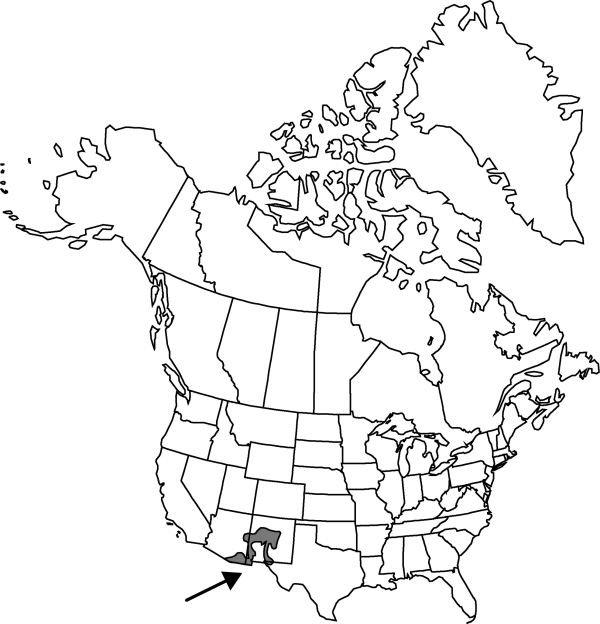Mammillaria wrightii
Proc. Amer. Acad. Arts 3: 262. 1856.
Plants usually unbranched. Roots: upper portion of primary root somewhat thickened and succulent proximally, otherwise fibrous. Stems flat-topped or spheric, 4–8 × 4–8 cm, ± flaccid; tubercles 6–24 mm; axils appearing naked; cortex and pith mucilaginous; latex absent. Spines 9–31(–34) per areole, white, usually tipped brown; radial spines 8–30 per areole, in 1 series, glabrous (puberulent in first year flowering plants); lateral spines bristlelike, 7–11 mm, stiff, longest and thickest of spines; adaxial spines often darker; central spines 1–4(–7) per areole, porrect or strongly projecting, 1 or all hooked, (5–)12–14(–21) mm; subcentral spines 0. Flowers 2.5–3.5(–5.2) × 2.2–4.5(–7.5) cm; outer tepal margins conspicuously fringed; inner tepals rose-pink or magenta [white], margins often paler; stigma lobes yellow or pale green (rarely reddish). Fruits green or dull purple, spheric to ovoid or obovoid, (9–)13–20(–28) × (6–)7–1.9(–26) mm, juicy throughout; floral remnant persistent. Seeds black, 1.3–1.5 mm, pitted; testa hard, anticlinal cell walls straight (not undulate); interstices conspicuously narrower than pit diameters; pits bowl-shaped. 2n = 22.
Distribution

sw United States, Mexico.
Discussion
Varieties 3 (2 in the flora).
Key
| 1 | Radial spines usually 8-15 per areole; fruits 12.5-26 mm diam | Mammillaria wrightii var. wrightii |
| 1 | Radial spines usually 16-30 per areole; fruits 6-15 mm diam | Mammillaria wrightii var. wilcoxii |